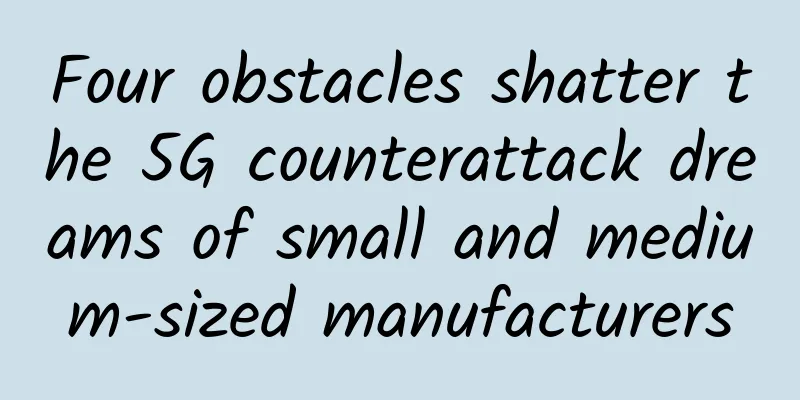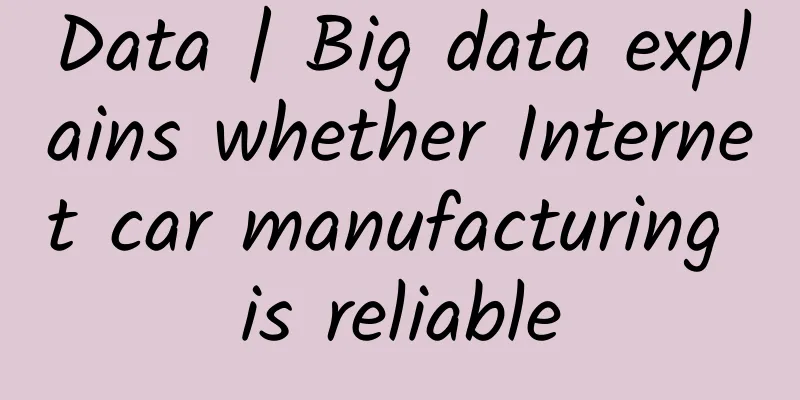What is the user value of the automotive aftermarket? Analyzing the definition of the automotive aftermarket

Douban founder Abei once said,
However, in the automotive aftermarket, there is no consensus on what constitutes user value and what constitutes user experience. People often only grasp part of the user value and ignore the other part, or spend too much energy on user experience. Then, this article attempts to analyze what the user value of the aftermarket is, find the appropriate focus, form a breakthrough in the aftermarket, and ultimately build the core industry competitiveness of the aftermarket. We know that the automotive aftermarket is a service-oriented market. Its customers are car owners and its service objects are cars. It mainly provides a variety of services including car washing, maintenance, auto insurance, finance, leasing, used cars, etc. The market size is huge and has great development potential and imagination space. The author believes that the user value of the automotive aftermarket mainly includes three aspects: one is to meet vehicle needs, two is to save user costs, and three is to save user time. In addition, service attitude, store decoration, follow-up maintenance and other aspects can all be attributed to user experience. User value of the automotive aftermarket1. User value is to meet vehicle needsSolving car problems is the most basic user value of the aftermarket and the foundation for the existence of the industry. I believe that all aftermarket practitioners agree with this value, and this is also where everyone has been focusing their efforts. How can we develop if we can’t even handle a car? But, can we develop well if we can get the car done? Actually, not necessarily. Many practitioners work diligently on management and quality, hoping to build a good reputation through solid service and gradually grow and develop. To be honest, I respect these down-to-earth bosses very much. However, the aftermarket has been developing for so many years, and there are many veterans in the industry. In addition, due to the emergence of many innovative companies in the auto parts supply chain, the support for stores has been greatly enhanced. So as far as routine businesses such as washing, quick repairs, and maintenance are concerned, there are actually no insurmountable technical barriers. Washing a car, changing a tire or battery, doing a good maintenance or body painting are relatively easy to do as long as there is qualified management, experienced technicians and reliable spare parts channels. This type of business accounts for a high proportion and supports hundreds of thousands of repair companies. Even for major overhaul business, there are many 4S stores and high-end repair shops in the market that can complete it. A friend once asked me if the aftermarket lacks high-quality repair capacity. I asked him in return, if you can guarantee 1,000 vehicles coming into the store every month, can you build a high-quality repair shop? In fact, I think what the aftermarket lacks is a market competition mechanism that promotes the survival of the fittest, positive incentives for the industry to focus on quality and efficiency and eliminate fraud, and a profit distribution system that allows high-quality maintenance companies to develop stably, stand out and make huge profits. In contrast, in today's aftermarket, bad money often drives out good money. Providing high-quality services does not necessarily mean a good life, and providing low-quality services does not necessarily mean a bad life. When the most pressing survival issues are faced, ensuring quality is often not a question of whether you can, but a question of whether you are willing to do so and whether it is cost-effective. Then why is it that even if you have good service quality, you cannot guarantee a good survival in the aftermarket? Are the irrefutable truths in all walks of life invalid here? This is because the aftermarket has a characteristic, that is, users have a low perception of service quality. To them, the quality of car repairs is like the back of a wardrobe and is basically invisible . In other words, whether you use the best accessories, materials and workmanship, or slightly inferior ones, users cannot perceive or believe it. As long as there are no major problems, they will receive the car in about the same condition. Even if there are any problems, that will be a few months later. It can be said that users basically cannot give any effective opinions or evaluations. Their evaluations often reflect the reception attitude, store decoration and even the boss's appearance, and have nothing to do with the actual quality of maintenance. As a result, many maintenance business owners who come from a technical background and who focus on quality often feel like they are hitting cotton with their fists. Customers are confused and find it difficult to agree, and the bosses have no words to say. It would be better for them to renovate the stores well to achieve immediate results. What's more, there is often a misalignment of paying entities in the aftermarket . Many maintenance business owners rely on connections to source corporate or government vehicles. To these customers, quality is not as important as alcohol consumption, and service is not as important as kickbacks. There are also repair shops that help users fabricate accidents and inflate damage assessments in order to defraud warranty vehicles. All of these distort the value orientation of putting service quality first. It is difficult for users to judge the quality of repairs, so they cannot vote with their feet. In addition, the existence of a misaligned paying entity has made it difficult for the aftermarket to establish an effective survival of the fittest mechanism. Similarly, some Internet aftermarket platform companies want to form a service closed loop through user reviews. On the one hand, it encourages maintenance companies to pay attention to service quality, and on the other hand, it provides reference for other users. They hope to form a survival of the fittest mechanism on the platform, improve user service experience, and promote the healthy development of the industry. However, since aftermarket users' evaluations of maintenance services are less accurate, they cannot provide sufficient reference value to other customers, nor can they guide maintenance companies to truly focus on maintenance quality (rather than superficial work). Therefore, such platforms are of little value to user selection and industry development. Some people say that it is possible to help users master certain automotive knowledge, provide a maintenance knowledge consultation platform, or provide an accessories e-commerce platform to improve users' ability to discern service quality and accessories materials, thereby increasing the transparency of the aftermarket. But I think this is not in line with the development trend, because car services are a burden-based consumption rather than a consumption-based consumption, and the low consumption frequency means that we cannot expect users to become professional. All they need is for the aftermarket to provide a solution that meets user values and a trustworthy brand so that they can entrust their vehicles with confidence. As for the transparency issue of the aftermarket, it can only be solved within our industry . Many aftermarket franchise chains export their mature brands, management and service systems to stores. However, the difficulty for stores does not lie in training and implementation. The real difficulty lies in how to persist. They must quickly see an increase in customer flow and improvement in efficiency. Only in this way can they have the financial support and motivation to maintain good service status and quality. However, as mentioned earlier, users have a low perception of maintenance quality. We find that no matter how good the quality is, there are not that many customers, and market feedback has obvious lags and inaccuracies. Therefore, many franchise stores cannot hold on for long and give up halfway, lose confidence in the franchise brand, abandon high-cost high-quality service methods, and return to low-cost operations to survive. If the franchise is not withdrawn at this time, it will in turn quickly damage the brand power and credibility of the chain enterprise itself, disrupting the stable development of the entire franchise system. The problem is equally obvious for businesses in the 4S store format. With the support of the OEMs, 4S stores have established the most powerful after-sales service system early on. In terms of user value of meeting vehicle needs, they are undoubtedly the first in the aftermarket. However, with the decline in new car sales, rising costs and intensified competition in recent years, 4S stores have shifted their focus to after-sales services to seek higher profits. The double-edged sword of brand authorization has firmly restricted the room for 4S stores to play in the aftermarket, ultimately leading to increasing service prices, declining service levels, and a continuous deterioration in the overall operating situation. From the perspective of user value, the 4S store business is regressing in both meeting vehicle demand and saving user costs, and is constantly overdrawing the trust of users in the service quality of 4S stores that has accumulated over the years. For 4S stores, if the business model cannot be changed, even if they have the best service quality and customer trust, they will not be able to gain an invincible position in the aftermarket. 2. User value is saving user costsThis is also a very important focus, and the competition is about who can provide users with more price-competitive services. Currently, there are three main ways to exert efforts on this user value point: the first is the traditional way, which is to reduce costs by improving business management and optimizing procurement channels (cheap parts and cheap technicians may also be used), thereby reducing prices and expanding the customer base, and ultimately achieving economies of scale, which in turn further reduces costs. This is the method adopted by many maintenance companies; the second is the Internet way, which is to reduce the price of front-end services by making the wool come from the pigs, spending money on subsidies in the early stage to acquire a large number of users, and then realizing them in subsequent businesses such as auto insurance, used cars, and auto finance. This is the method adopted by many Internet aftermarket companies; the third is a combination of tradition and the Internet. After an in-depth analysis of 4S stores and repair shops, it was found that there are two value points in the market: low-cost repair capacity and low-cost repair time. Through the online group buying platform, users are directed to some repair shops in remote locations or new stores that need to be diverted, and users can also be arranged to go to the store during low-peak business hours. The author believes that the value point of saving user costs can be moderately developed, but two issues should be noted: (1) User acceptance For users, when it is difficult for them to accurately judge the quality of service, low-price competition can easily create an impression of low quality and low price, lose the trust of high-quality customers, and attract price-sensitive low-end users instead. This is not in line with the general trend of consumption upgrading in the automotive aftermarket. (2) Industry acceptance For the entire industry, simply pursuing low prices can easily lead to vicious competition, compressing the profit margins of the entire industry chain, further worsening the survival status of enterprises, reducing the attractiveness of talent, affecting long-term investment in the industry, and ultimately affecting the industry's core competitiveness construction and long-term healthy development. If these two problems can be avoided, then after several rounds of survival of the fittest, the automotive aftermarket may produce large-scale maintenance companies with low prices, transparency, small profits and quick turnover as their core competitiveness. 3. User value is saving user timeThere is a major difference between the service industry and the manufacturing industry in terms of user value, and that is user time. The manufacturing industry usually delivers complete products to customers, and the R&D and production processes do not take up the customer's time (except for those who have pre-ordered Tesla ). Therefore, the user value of the manufacturing industry is generally the customer demand that the product itself can meet and the product price. The service industry usually generates value during the service process, which in most cases takes up the time of the service recipients. Therefore, in addition to meeting demand and price, saving users' time is often also important for the user value of the service industry. Looking at the leaders in the modern service industry, all of them regard saving user time as one of their main focuses, such as JD.com, SF Express, etc. For example, the aviation industry has developed into an indispensable infrastructure in modern society. From the perspective of user value, the most basic user value of the transportation service industry is to help people complete distance movement. Highways, high-speed railways, and aviation can all meet this demand. Their main difference actually lies in the length of time. It can be said that the government has invested huge sums of money to establish and operate an advanced and huge aviation and high-speed rail system. The main user value it pursues and the core industry competitiveness it builds is to save more user time. This shows the value of time to modern people. The high-speed transportation system has indeed greatly promoted the rapid development of modern society and economy and created huge value, which also proves the rationality of taking time saving as the core user value. Back to the automotive aftermarket, I am often surprised to find that there is a widespread disregard for user time in the aftermarket and a general lack of time awareness of advanced service industries. The owner of a repair shop once told me that a car needs to be repaired for a few more days in order to reflect the difficulty and raise the price. If the repair is too fast, the customer will feel it is not worth it, so sometimes when a car comes in, he will leave it alone for a few days. Although this is just an isolated case, it also reflects the extent to which the aftermarket as a whole neglects user time. Generally speaking, from the time a user discovers a problem to the time it is solved, it generally requires the delivery of the car, inspection, repair, and pickup. If it cannot be completed on the same day, the user has to make two trips back and forth, spending double the time. If there is also damage assessment and claims, plus bilateral or multilateral accidents, the time will be even longer, which often makes users complain. As the pace of society accelerates, the value of time becomes more prominent, and the time spent on car repairs has become an increasingly troublesome problem for many users. The more users value time, the more they tend to be high-end. There is huge value space here, which is also in line with the general trend of consumption upgrading in the next decade. Some companies with leading concepts have worked hard on maintenance processes and techniques to speed up construction and reduce maintenance time; some companies also provide users with pick-up and delivery services to save users time on the way to the store. However, since the industry as a whole has not fully recognized the core strategic value of saving user time, the main focus is still on how to better meet vehicle needs and cost control, resulting in low strategic positioning and implementation efficiency of these time-saving services for users. summaryThe author believes that there is always an opportunity space in the aftermarket for independent companies that can focus on optimizing business processes and saving user time, compressing time at the front end to obtain premiums, and compressing costs and improving efficiency at the back end, thus becoming an automotive aftermarket logistics solution provider similar to SF Express. No matter how comfortable and safe an airplane is, if it is not faster than a train, it will still face the pressure of being eliminated. This is an issue related to the core competitiveness of the industry. For our colleagues in the aftermarket, when we have repaired the cars very well and kept the costs very low, but still find it difficult to make breakthroughs and the differentiated advantages are not obvious, perhaps helping users save time as much as possible is a more appropriate value breakthrough? Mobile application product promotion service: APP promotion service Qinggua Media information flow The author of this article @利民 Compiled and published by (APP Top Promotion), please indicate the author information and source when reprinting! |
Recommend
Still have no idea about operations? An article to help you sort out your thoughts
The operation work is fragmented and disorganized...
Big news! The birth of a machine-organoid hybrid "biological computer"! It may overcome the bottleneck of AI hardware
The human brain, the "command center" o...
How to build an advertising strategy system?
When placing advertisements, operators need to ke...
Love Course: e-book collection PDF Baidu network disk download
Love Course: e-book collection PDF Baidu network ...
Low-key Ganzi, Sichuan, contains such a unique color aesthetics
Ganzi, Sichuan A very humble name It encompasses ...
International Freshwater Dolphin Day | Let’s celebrate the holiday for these river elves!
October 24 is International Freshwater Dolphin Da...
Wang Liuliu's 30-day traffic mining plan complete video
Want to know how to completely solve it within 30...
How did Chang Cheng, who is not good at quarreling, make ZUKZ1 popular?
If you follow the mobile phone industry, you must...
How to quickly increase fans on Kuaishou? What should I pay attention to when increasing followers?
This article mainly introduces how to quickly inc...
Unique skills in one thread! A variety of spinning techniques
Part 1: Primitive Spinning Throughout the history...
There are also "giant pandas" in the water, and they also "serve" as water quality "inspectors"
The peach blossom fish is transparent, headless a...
Analyzing the hot-selling machine - the community ecology of Toutiao
As one of ByteDance's popular apps, Toutiao i...
The little thing that looks like a skeleton panda finally has a name in 2024
Marine creatures that look like panda skeletons, ...
Tencent releases 2015 WeChat user data report
WeChat is no longer just a mobile application ful...









